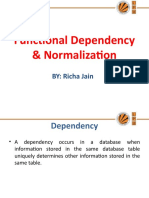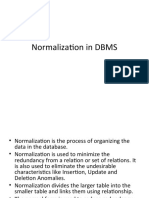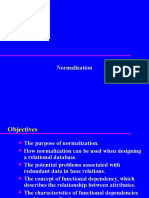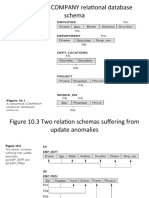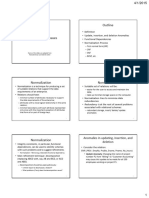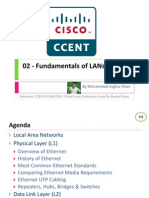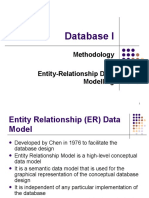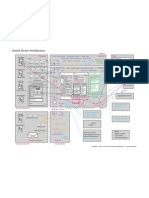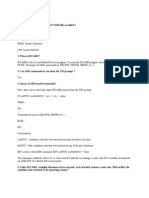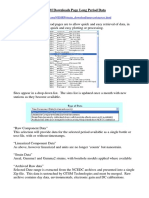0% found this document useful (0 votes)
62 views37 pagesDatabase Normalization Guide
Normalization is a technique for analyzing and organizing data in a database to reduce data redundancy and improve data integrity. It involves decomposing tables to achieve different normal forms, with each step meeting certain requirements. The goals of normalization are to minimize duplicate data, minimize the chance of data anomalies like insertion, deletion and modification anomalies, and simplify data access and maintenance. Functional dependencies describe relationships between attributes, and are used along with various inference rules to determine candidate keys and develop normalized database tables.
Uploaded by
Muhammad Asghar KhanCopyright
© Attribution Non-Commercial (BY-NC)
We take content rights seriously. If you suspect this is your content, claim it here.
Available Formats
Download as PPT, PDF, TXT or read online on Scribd
0% found this document useful (0 votes)
62 views37 pagesDatabase Normalization Guide
Normalization is a technique for analyzing and organizing data in a database to reduce data redundancy and improve data integrity. It involves decomposing tables to achieve different normal forms, with each step meeting certain requirements. The goals of normalization are to minimize duplicate data, minimize the chance of data anomalies like insertion, deletion and modification anomalies, and simplify data access and maintenance. Functional dependencies describe relationships between attributes, and are used along with various inference rules to determine candidate keys and develop normalized database tables.
Uploaded by
Muhammad Asghar KhanCopyright
© Attribution Non-Commercial (BY-NC)
We take content rights seriously. If you suspect this is your content, claim it here.
Available Formats
Download as PPT, PDF, TXT or read online on Scribd
/ 37




